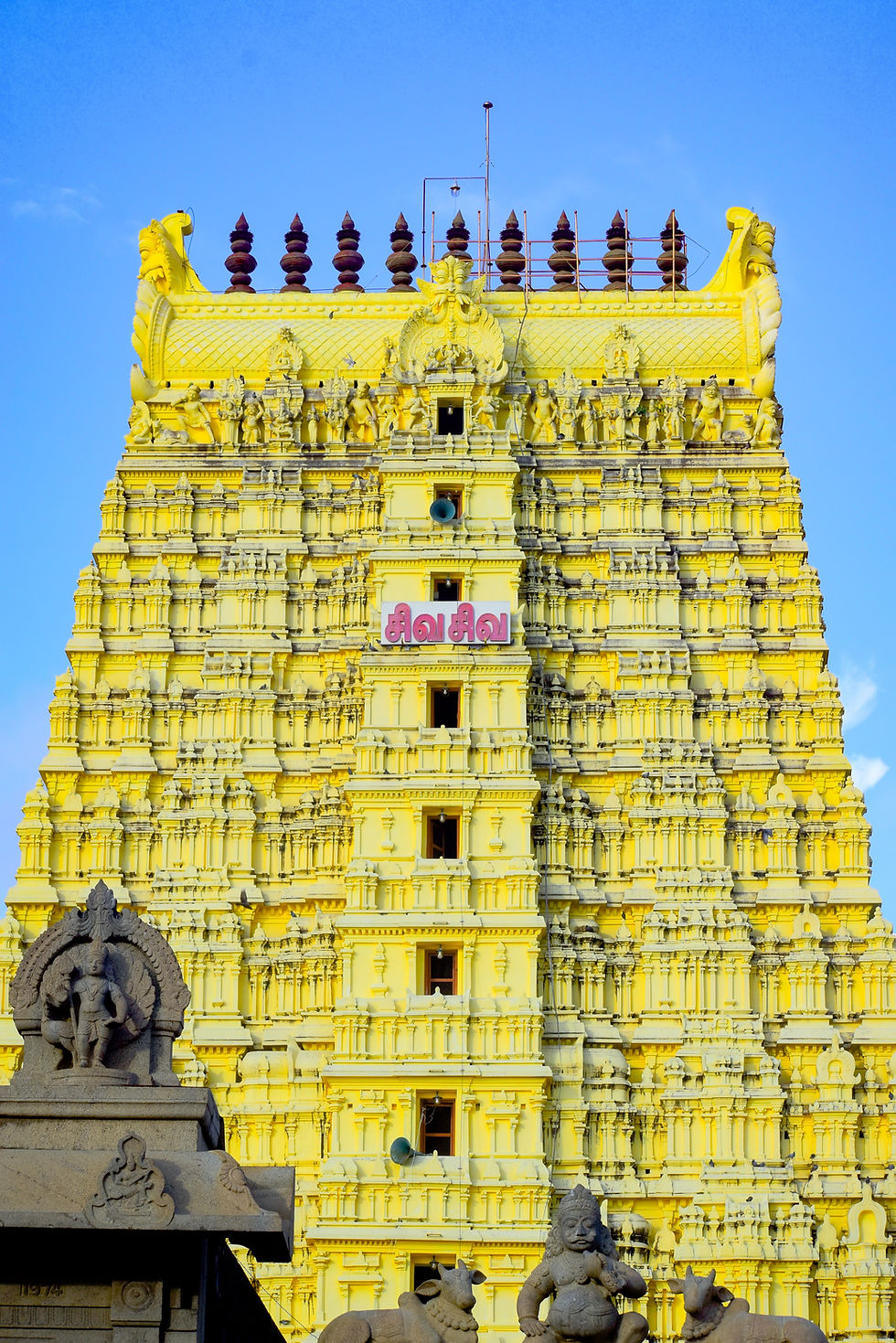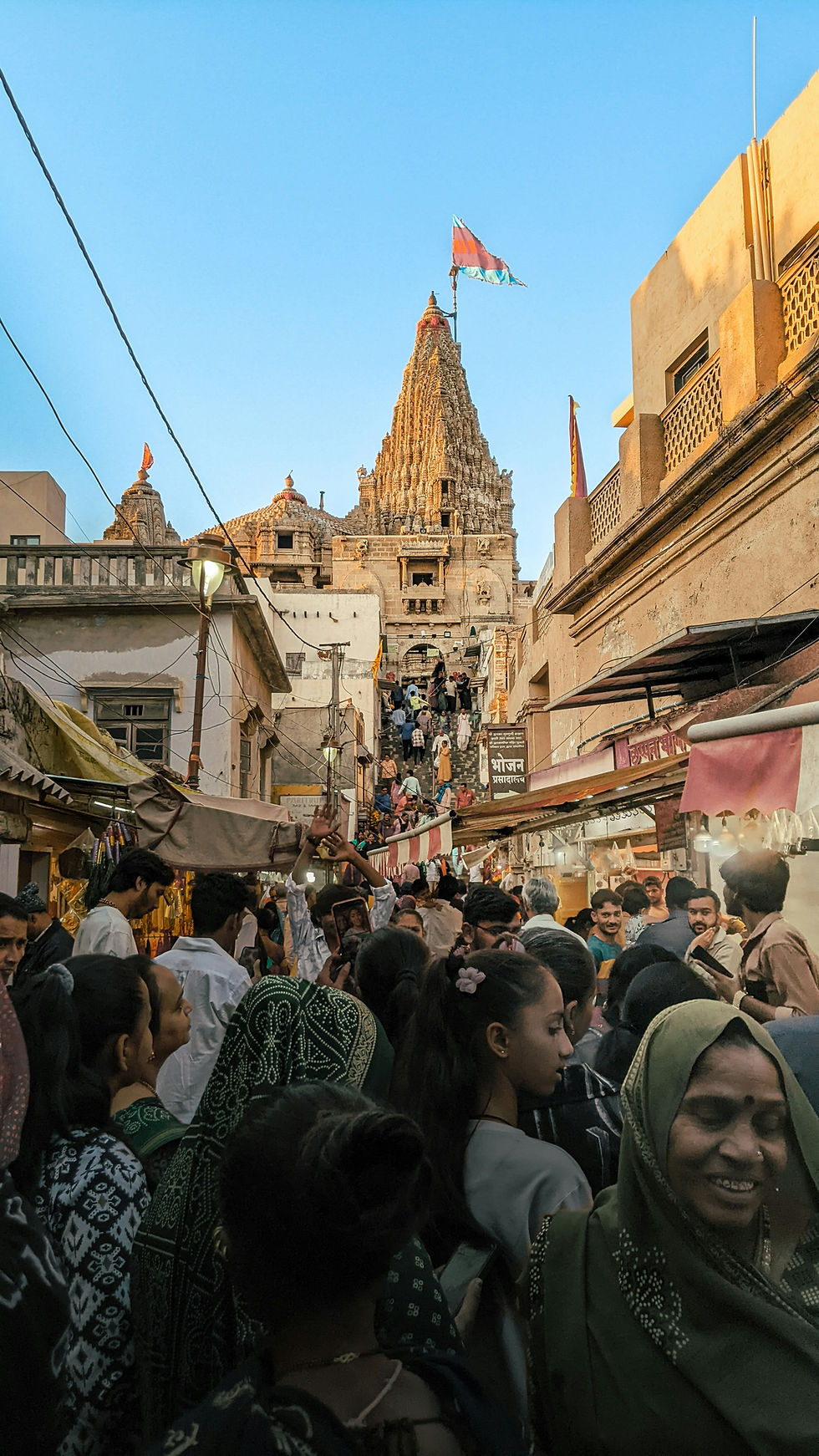CHAR DHAM OF INDIA
- Shreya Giri
- Jul 24
- 5 min read
India is a land where divinity and devotion shape the cultural ethos of millions. Amidst its vast spiritual tapestry, the Char Dham Yatra holds a special significance. "Char Dham" means "Four Abodes," and it refers to a sacred pilgrimage to four of the most revered temples in the Hindu religion, Badrinath in the North, Dwarka in the West, Puri in the East, and Rameswaram in the South.

Each of these sites represents a different deity and a cardinal direction, forming a spiritual circuit believed to wash away sins and help attain moksha (liberation). The concept was popularized by the 8th-century philosopher and reformer Adi Shankaracharya, who sought to unify and revive Hinduism through these pilgrimages.
In the Hindu tradition, undertaking the Char Dham Yatra is considered a life-altering spiritual journey. Devotees believe that visiting these four sites at least once in a lifetime helps them attain spiritual enlightenment and escape the cycle of birth and rebirth. These pilgrimages are not just religious acts but are deeply symbolic, connecting the devotee with cosmic elements and divine energies. The four temples also honor different forms of Vishnu or his avatars, creating a spiritual balance across India's geographical expanse
These pilgrimages are mentioned in various scriptures, including the Puranas and the Mahabharata, and are seen as critical milestones in one’s spiritual journey. The Char Dham Yatra is also often referred to as the “Mahapatha” (the Great Path), leading one closer to God and inner peace.

Badrinath – The Northern Abode of Lord Vishnu
Nestled in the lofty Garhwal Himalayas on the banks of the Alaknanda River, Badrinath is considered the holiest of the four dhams. The temple is located at an altitude of 3,133 meters and is accessible during the summer months when the snow clears. According to Hindu mythology, Lord Vishnu meditated at this spot, and his consort Lakshmi took the form of a Badri tree to provide him shade.
The Badrinath Temple, built in the 8th century by Adi Shankaracharya, is an architectural marvel with its colorful façade and cone-shaped structure. The main deity, a black stone statue of Vishnu in meditative posture, is said to be self-manifested. Pilgrims also bathe in the nearby Tapt Kund, a hot water spring believed to have healing properties.
Badrinath is not only a place of devotion but also of scenic and spiritual serenity. Surrounded by the Nar and Narayan mountain ranges and near the Neelkanth peak, it radiates tranquility and divine presence.

Dwarka – The Western Kingdom of Krishna
Dwarka, meaning “Gateway to Heaven,” is located on the western coast of India in Gujarat. It is believed to be the ancient kingdom of Lord Krishna, who settled here after leaving Mathura. The current Dwarkadhish Temple, also known as the Jagat Mandir, is a five-storied sandstone marvel supported by 72 intricately carved pillars, rising 43 meters high.
Legend has it that the original city of Dwarka was submerged in the sea after Krishna left the earth, and archaeological excavations have provided evidence of underwater structures near the current site. The temple houses the deity of Krishna in his royal form as King of Dwarka, making it a major pilgrimage site for Vaishnavites.
Dwarka also forms part of the Sapta Puri (seven holy cities) and is closely linked to the Mahabharata and Bhagavata Purana. Nearby attractions include the Rukmini Devi Temple, Bet Dwarka, and the Gomti Ghat, where pilgrims perform rituals and bathe to cleanse themselves of sins.

Puri – The Eastern Seat of Lord Jagannath
On the eastern coast of India, along the Bay of Bengal, lies the temple town of Puri. It is famous for the Jagannath Temple, dedicated to a unique form of Lord Krishna known as Jagannath, along with his siblings Balabhadra and Subhadra. Puri is renowned for the Rath Yatra (Chariot Festival), when millions gather to pull the massive chariots of the deities through the streets.
Built in the 12th century by King Anantavarman Chodaganga of the Eastern Ganga dynasty, the Jagannath Temple is a marvel of Kalinga architecture. It stands on an elevated platform and is enclosed by a high wall. The temple has several mysteries, including the inexplicable reversal of wind direction on its flag and the absence of bird activity in its vicinity.
Puri is not just a religious site but also a cultural hub, with its famous sand art, beaches, and classical dance forms. The Mahaprasad (holy offering) cooked in earthen pots using traditional methods is considered sacred and is distributed to thousands daily.

Rameswaram – The Southern Pillar of Shiva and Vishnu Worship
Rameswaram, located on the Pamban Island in Tamil Nadu, is unique among the Char Dham sites because it is dedicated to Lord Shiva, though it completes the Vishnu circuit. According to the Ramayana, Lord Rama, an incarnation of Vishnu, built a bridge from Rameswaram to Lanka to rescue Sita. Before embarking on the battle, Rama worshipped Shiva here to seek blessings and absolution for killing Ravana, who was a Brahmin.
The Ramanathaswamy Temple is one of the twelve Jyotirlingas of Lord Shiva and showcases stunning Dravidian architecture with the longest temple corridor in the world, over 1,200 meters. Pilgrims take holy baths in the 22 theerthams (sacred wells) within the temple complex before offering prayer
Rameswaram’s spiritual energy is amplified by its association with both Shaivism and Vaishnavism. It symbolizes unity in diversity and embodies the synthesis of different streams of Hindu belief. The Adam’s Bridge (also known as Ram Setu), a chain of limestone shoals, is a major geographical and mythological attraction nearby.

Each Dham holds deep metaphysical meaning. Badrinath in the Himalayas represents the mind and knowledge, urging self-realization through meditation. Dwarka, on the coast of Gujarat, symbolizes prosperity and leadership, encouraging righteous living. Puri represents devotion and surrender, while Rameswaram embodies sacrifice and penance, all paths leading toward moksha.
The locations also coincide with significant astronomical and geographical energies. Many believe that the positioning of the Char Dhams was not random but aligned with the Earth’s energy meridians, amplifying their spiritual power.
The rituals, festivals, and legends associated with each dham enrich the Indian spiritual tradition. They also serve as windows into the socio-religious history of India, showcasing how faith has influenced art, architecture, governance, and literature.

About the Author
Shreya Giri is a talented SEO content writer with a unique flair for captivating readers. With a bachelor's degree in geography, her passion for crafting exceptional content shines through in every word she writes. Shreya's expertise lies in her ability to seamlessly blend language and storytelling, effortlessly capturing the attention of her audience.
She is pursuing a Master's degree in geography and has a remarkable talent for transforming intricate concepts into captivating narratives that have a lasting impact. With Shreya, you can expect excellent, compelling content that will keep you engaged from beginning to end.
You can connect with her through-
My-Lekh profile- https://www.my-lekh.com/profile/shreyagiri3008/profile
LinkedIn profile- https://www.linkedin.com/in/shreya-giri-a0a607265
Email- shreyagiri3008@gmail.com





Comments